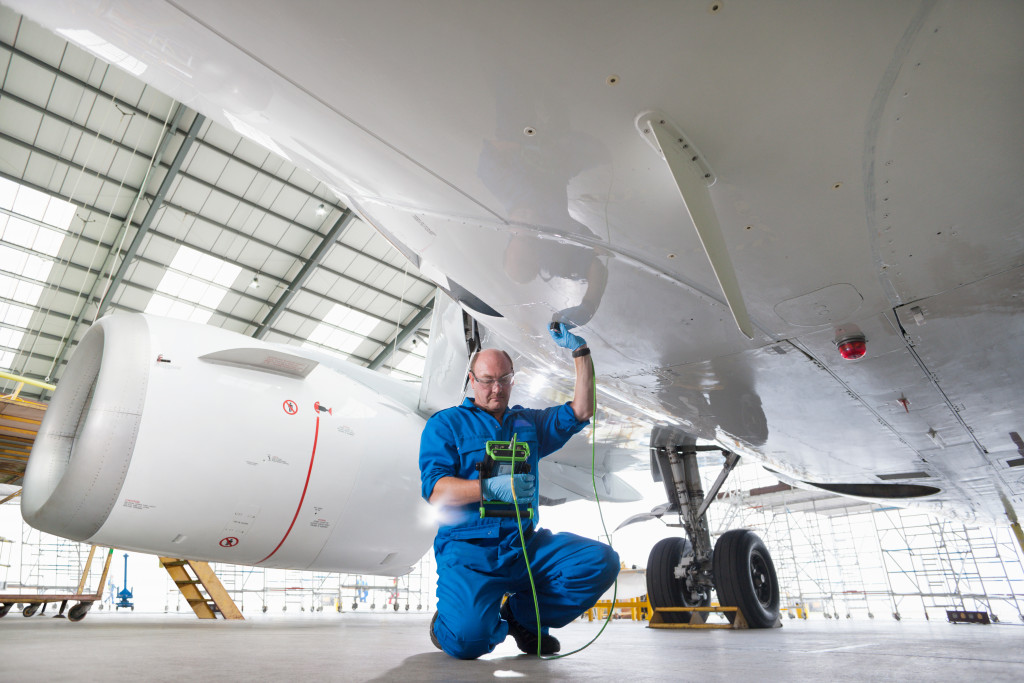Aviation maintenance is a critical component of air travel safety. Aircraft must undergo regular inspection and maintenance to ensure that they are safe for operation. Without proper maintenance, aircraft can develop serious faults that could lead to accidents.
Studies show that up to 12% of aviation accident reports cite aircraft maintenance as a contributory factor. While the vast majority of maintenance is carried out correctly, some errors can occur from time to time. This article will discuss 3 common aviation maintenance errors and how to solve each one.
Improper Cleaning of Parts
One of the most common aviation maintenance errors is improper cleaning of parts. This can cause various problems, ranging from reduced performance to complete failure. To clean parts properly, it is essential to use the correct solvents and methods.
For instance, using a high-pressure washer on delicate parts can damage them. On the other hand, not using enough solvent can leave behind residue that can attract dirt and debris. Improper cleaning is often the result of haste or poor training, which can have serious consequences.
One of the most common problems caused by improper cleaning is corrosion. When metal parts are not cleaned properly, they can be susceptible to corrosion, which can weaken the metal and cause it to fail. In addition, dirt and other debris can build up on parts, causing them to work less efficiently. Over time, this can lead to decreased performance and increased fuel consumption.
In worst-case scenarios, dirt and debris can cause parts to fail completely, leading to accidents or other serious incidents. Therefore, all aviation parts must be cleaned properly to avoid these potential consequences.
Incorrect Testing of Equipment
Incorrect testing of equipment is a common aviation maintenance error. This can happen when a mechanic fails to properly test a component after performing maintenance on it. The most common type of equipment that is incorrectly tested is aircraft engines.

Aircraft engines are complex pieces of machinery, and they must be thoroughly tested after any maintenance is performed. However, it is not uncommon for mechanics to overlook this step. As a result, engines can develop problems that go undetected until it is already too late.
It is essential to ensure that all aircraft engines are properly tested after any maintenance is performed. Ground tests should be conducted before each flight, including a check of all engine systems. Flight tests should also be conducted regularly, and they should include a thorough inspection of the engine during flight.
Another common type of incorrectly tested equipment is testers for pitot static systems. These devices are used to measure the airspeed, altitude, and other parameters of an aircraft. They are essential for safe flights, but they can be tricky to use.
If these testers are not used correctly, they can give false readings that could lead to accidents. It is crucial to make sure that one invests in good quality testers and that they are used correctly. It helps to find a reliable store that sells aviation testing products and other parts and accessories compatible with one’s aircraft.
Incorrect Torque Settings
Another common aviation maintenance error is incorrect torque settings. Torque settings are critical for many aviation components like engines, propellers, and landing gear. If these components are not properly torqued, they can become loose and fall off. This can lead to severe accidents or other incidents.
It is vital to make sure that all aviation components are properly torqued. The correct torque setting for each element can be found in the aircraft’s maintenance manual. It is also essential to use a torque wrench when tightening these components. It can be easy to overtighten them by hand.
If the torque settings on an engine are too high, it can cause the engine to vibrate excessively. This can lead to engine failure or other serious problems. On the other hand, if the torque settings are too low, it can cause the engine to be underpowered, leading to decreased performance and increased fuel consumption.
It is vital to ensure that all torque settings are correct before flying an aircraft. One way to do this is to use a torque wrench. This special tool can measure the amount of torque applied to a component.
Another way to ensure correct torque settings is to follow the manufacturer’s specifications. These specifications can be found in the aircraft’s maintenance manual. By following these specifications, one can ensure that all components are correctly torqued and will function correctly.
These are but three of the most common aviation maintenance errors. Improper cleaning of parts, incorrect testing of equipment, and incorrect torque settings can all lead to severe problems. It is essential to be aware of these errors and take steps to avoid them. By doing so, one can help keep their aircraft in top condition and avoid potential accidents.
